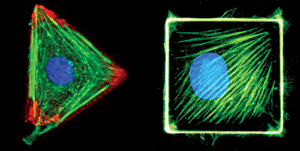These are excerpts from the cover story of the March 26, 2007 issue of Chemical and Engineering Times dealing with the origin of life. Read the whole article at the link provided.
Revolutions In Chemistry
Priestley Medalist George M. Whitesides’ address
The Cell and the Nature of Life. I believe that understanding the cell is ultimately a question of chemistry and that chemists are, in principle, best qualified to solve it. The cell is a bagÂÂa bag containing smaller bags and helpfully organizing spaghetti – ÂÂfilled with a Jell-O of reacting chemicals and somehow able to replicate itself. Yes, it is important to know the individual reactions that make the cell what it is, but the bigger problem is understanding why life -the cellÂÂ- is dynamically stable as a strongly interconnected network of reactions, organized in space and time in ways we do not grasp.
Although we presently have no theory to explain this kind of system, understanding the kinetics of systems of coupled reactions is the kind of thing that chemists and chemical engineers are -ÂÂin principle- ÂÂuniquely qualified to do.
The Origin of Life. This problem is one of the big ones in science. It begins to place life, and us, in the universe. Most chemists believe, as do I, that life emerged spontaneously from mixtures of molecules in the prebiotic Earth.
How? I have no idea. Perhaps it was by the spontaneous emergence of “simple” autocatalytic cycles and then by their combination. On the basis of all the chemistry that I know, it seems to me astonishingly improbable. The idea of an RNA world is a good hint, but it is so far removed in its complexity from dilute solutions of mixtures of simple molecules in a hot, reducing ocean under a high pressure of CO2 that I don’t know how to connect the two.
We need a really good new idea. That idea would, of course, start us down the path toward systems that evolve autonomously – a revolution indeed.
